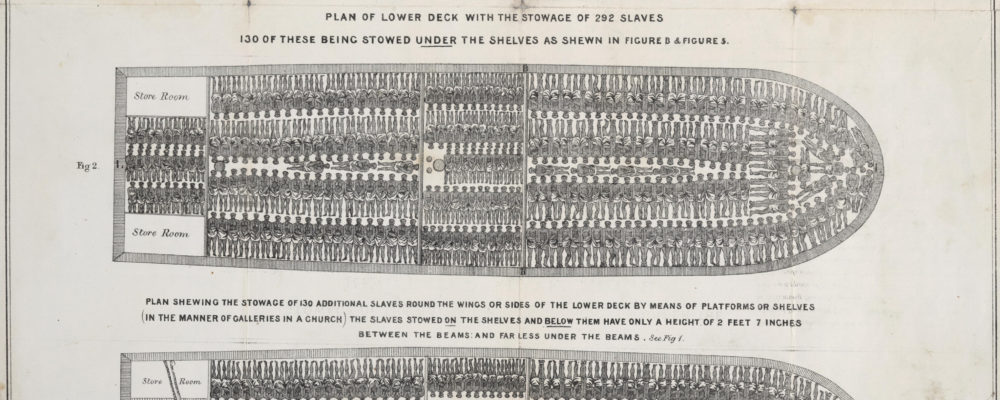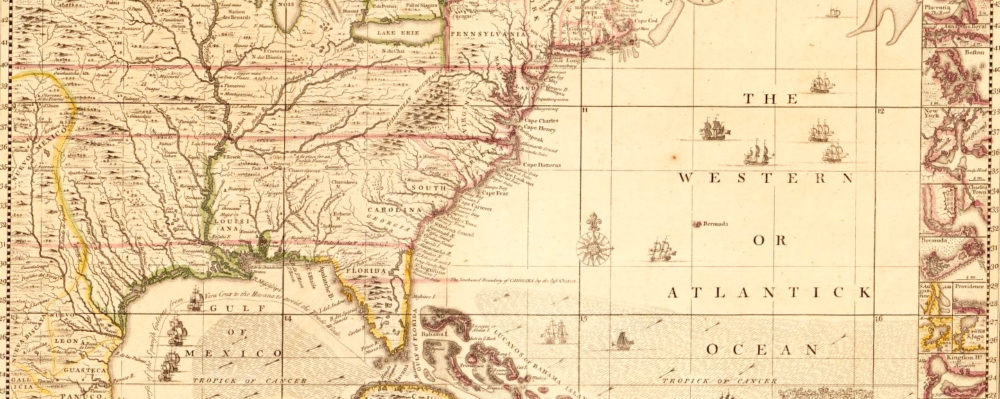
“Stowage of the British slave ship Brookes under the regulated slave trade act of 1788,” 1789, via Wikimedia.
Introduction
The seventeenth century saw the creation and maturation of Britain’s North American colonies. Colonists faced a century of struggle against unforgiving climates, imperial intrigue, and Native Americans defending their lands. They did so largely through ruthless expressions of power. Colonists attacked Native Americans, provoked European rivals, and joined a highly lucrative transatlantic economy rooted in slavery. After surviving a century of desperation and war, British North American colonists fashioned increasingly complex societies with unique religious cultures, economic ties, and political traditions. These sources reveal the often brutal conditions of life in colonial America.
Documents
In this harrowing description of the Middle Passage, Olaudah Equiano described the terror of the transatlantic slave trade. Equiano eventually purchased his freedom and lived in London where he advocated for abolition.
Robert Horne’s wanted to entice English settlers to join the new colony of Carolina. According to Horne, natural bounty, economic opportunity, and religious liberty awaited anyone willing to make the journey. Horne wanted to recruit settlers of every social class, from those “of Genteel blood” to those who would have to sign a contract of indentured servitude.
Thomas Newe’s account of his experience in Carolina offers an interesting counter to Robert Horne’s prediction of what would await settlers. Newe describes deadly disease, war with Native Americans, and unprepared colonists. Newe longs for news from home but also appears committed to making a new life for himself in Carolina.
The journey across the Atlantic was difficult at best and deadly at worst. Francis Pastorius left his home in Germany to create a new life in Pennsylvania. This account shows the discomforts and dangers of oceanic travel in the seventeenth century.
Some English men and women understood the New World to be a place of opportunity, where they could create new lives. More common, however, was the belief that the New World was a place of great danger and suffering. This song was written from the perspective of a young girl who was sent to Virginia against her will, where she faced a life of hunger and never-ending work.
This Thanksgiving address was used by the six nations of the Haudenosaunee (Iroquois) to open and close major gatherings or meetings. The prayer was also sometimes used individually at the beginning or end of the day.
Rose Davis was born to an indentured servant white woman and a Black man. Slave law claimed that children inherited the status of their mother, a law which enabled enslavers to control the reproductive functions of their enslaved women laborers. However, as race increasingly became a marker of slavery, even the children of free white women could be vulnerable to enslavement. Rose had been working as an indentured servant when she petitioned the court for her freedom. Instead, she was sentenced to a lifetime of slavery.
Media

“Stowage of the British slave ship Brookes under the regulated slave trade act of 1788,” 1789, via Wikimedia.

Henry Popple, “A map of the British Empire in America with the French and Spanish settlements adjacent thereto,” 1733 via Library of Congress.
British colonists in the seventeenth and early eighteenth centuries occupied a constantly contested frontier. The British Empire competed with French, Spanish, Portuguese, Dutch, and even Scottish explorers to claim land in North America and the Caribbean – much of it already settled by Native Americans. This diverse territory would continue to be contested throughout the eighteenth century. Eventually, the British Empire included twenty-six colonies in North America, producing everything from grain and timber to luxury goods like tobacco and sugar.


